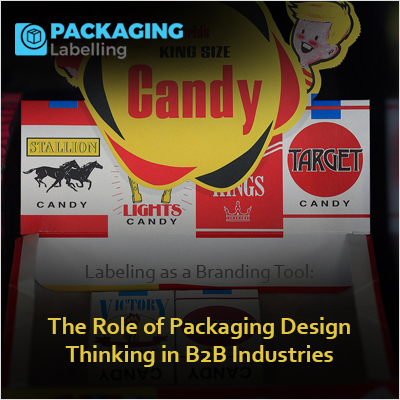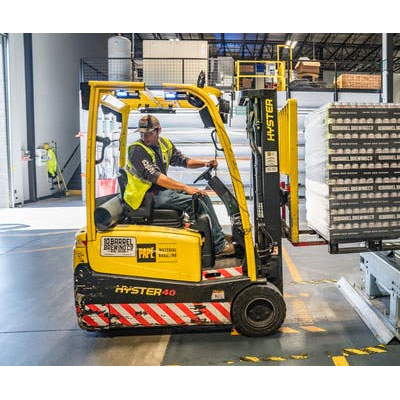The Role of Packaging Design Thinking in B2B Industries

In the fast-paced and dynamic landscape of B2B industries, where efficiency and functionality often take precedence, the role of packaging design thinking is gaining recognition as a strategic tool to create meaningful and impactful experiences. Design thinking, with its emphasis on empathy, collaboration, and user-centric solutions, is proving to be a valuable approach in shaping B2B packaging that goes beyond mere functionality.
Understanding the B2B User Experience:
The foundation of design thinking lies in gaining profound insights into end-users, and in the B2B realm, this entails grasping the requirements and inclinations of businesses as consumers. In the context of B2B packaging, it is crucial to take into account the complete user journey, spanning from the procurement phase to the eventual utilization of the product at its destination. Through empathizing with the obstacles encountered by businesses within their supply chains, packaging designers can formulate solutions aimed at simplifying processes, optimizing efficiency, and mitigating operational impediments.
Functionality and Practicality as Key Design Drivers:
While aesthetics play a role in packaging, the core of design thinking in B2B packaging revolves around functionality and practicality. The packaging must be designed to protect the contents, facilitate easy handling, and align with the logistical requirements of the B2B supply chain. Incorporating features like stackability, ease of opening, and compatibility with automated handling systems are crucial considerations in the design process.
Collaboration and Co-Creation:
Design thinking thrives on collaboration and co-creation. In the B2B space, this involves close collaboration between packaging designers, manufacturers, and the businesses themselves. By involving all stakeholders in the design process, it becomes possible to address diverse perspectives, ensuring that the final packaging solution is not only functional but also aligned with the unique needs and expectations of the businesses involved.
Sustainability and Cost Efficiency:
Design thinking encourages a holistic approach to problem-solving, and in B2B packaging, this extends to considerations of sustainability and cost efficiency. Packaging designers are challenged to find innovative solutions that reduce environmental impact, such as the use of recyclable materials or designing packaging that minimizes waste throughout the supply chain. Simultaneously, these solutions must be economically viable to meet the cost considerations of businesses.
Iterative Prototyping and Continuous Improvement:
An essential tenet of design thinking revolves around the iterative character of the design process. In the realm of B2B packaging, designers should actively adopt prototyping and continuous improvement practices, fostering feedback loops that fine-tune the packaging according to real-world usage and the dynamic requirements of businesses. This agile approach guarantees that packaging stays flexible and attuned to evolving market dynamics.
Extending the Scope of Packaging Design Thinking in B2B Industries:
In the intricate web of B2B transactions, where efficiency, reliability, and cost-effectiveness are paramount, the application of design thinking principles in packaging extends beyond the physical attributes of the packaging itself. It encompasses a broader perspective that delves into the entire ecosystem surrounding the product—from the initial design phase to the end of the product life cycle.
Early Collaboration for Holistic Solutions:
Design thinking encourages early collaboration among stakeholders, fostering a holistic approach to problem-solving. In B2B packaging, this means involving not only designers but also manufacturers, supply chain experts, and, most importantly, the businesses that will interact with the packaging. By facilitating open communication and co-creation, potential pain points can be identified and addressed early in the design process, ensuring that the final packaging solution is seamlessly integrated into the entire B2B workflow.
User-Centric Innovation:
While B2B transactions involve businesses, the end-users of the products are individuals within those organizations. Design thinking in packaging acknowledges the individuals who interact with the packaging—whether during the unpacking process, on the factory floor, or in a warehouse. By prioritizing user-centric innovation, B2B packaging can be designed with features that improve the overall user experience, such as ergonomic designs, intuitive labeling, and packaging that aligns with the specific needs of the end-users within a business.
Data-Driven Design:
In the era of Industry 4.0, where data plays a crucial role in decision-making, design thinking in B2B packaging integrates data-driven insights. This involves analyzing data related to supply chain efficiency, product handling, and even consumer preferences to inform the design process. By leveraging data analytics, packaging designers can identify patterns, optimize designs for specific industries, and continuously refine packaging solutions based on real-world performance metrics.
Adaptability to Technological Advancements:
The rapid pace of technological advancements in manufacturing and supply chain processes requires B2B packaging to be adaptable. Design thinking encourages a forward-thinking approach, anticipating technological changes and ensuring that packaging can seamlessly integrate with new systems and processes. This adaptability is crucial in an environment where automation, artificial intelligence, and the Internet of Things (IoT) are increasingly shaping the way businesses operate.
Brand Alignment and Differentiation:
Design thinking in B2B packaging recognizes the packaging as an extension of a brand's identity. It's not just about functionality; it's about aligning the packaging with the brand's values, messaging, and overall image. B2B packaging can be designed to differentiate a product in a crowded marketplace, contributing to brand recognition and loyalty among business customers.
Educational Packaging Design:
In B2B industries, where complex products and processes may be involved, packaging can play an educational role. Design thinking encourages the creation of packaging that communicates essential information about product usage, safety guidelines, and other relevant details. This educational aspect of packaging design can contribute to the smoother adoption of products within B2B environments, reducing the learning curve for end-users.
Conclusion:
Implementing design thinking principles in B2B packaging transcends surface-level considerations, adopting a holistic approach that takes into account the entire product lifecycle within a B2B ecosystem. Through promoting collaboration, emphasizing user-centric innovation, integrating data-driven insights, adapting to technological advancements, aligning with brand identity, and incorporating educational elements, B2B packaging has the potential to transform into a strategic asset. This transformation ensures that the packaging not only fulfills functional requirements but also becomes a key contributor to the overall success and competitiveness of businesses in the dynamic marketplace of today.









